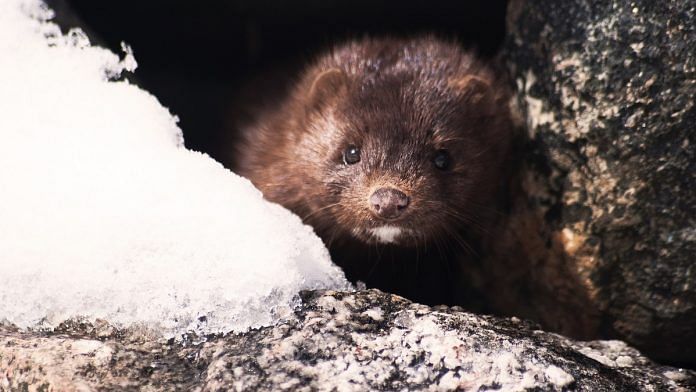Bengaluru: Days after Denmark said that it plans to cull 15 million mink over fears that the animal can spread a mutated form of Covid-19 to humans, a new study from neighbouring Netherlands has found that viral transmission can take place between humans to mink, as well as from mink to humans.
The new findings were made through genetic sequencing of viral strains on 16 infected mink farms in the Netherlands. The findings have raised concerns about mink becoming potential reservoirs of the novel coronavirus and affecting humans in future.
The study was published in the journal Science this week.
Also read: First crewed hyperloop pod tested — all about the tech that cuts travel time by hours
Coronavirus in other animals
Mink are farmed for their fur across the globe, even though there has been much criticism against it from animal rights groups. With studies finally talking about possibilities of viral transmission between mink and humans, there has been a push to ban mink farms in countries like Netherlands.
Earlier experiments have shown that in non-human primates such as ferrets, hamsters, rats, rabbits, cats, monkeys, and bats, the SARS-CoV-2 virus can cause Covid-19 infection. The disease has also been diagnosed in mink, big cats, and dogs.
The potential of so many species, that live closer to humans, getting infected by the virus also increases the risk of future outbreaks and epidemics among humans, even years after a vaccine is developed. It is, therefore, crucial to understand the mechanism of viral transmission among animals.
Since April, researchers in the Netherlands have been conducting an in-depth investigation into coronavirus outbreaks at 16 mink farms of the country. They also conducted detailed interviews with farm workers in order to trace their actions and contacts.
Findings of the study and risks
The genetic sequence of a virus carries distinct signatures (an identifying characteristic) of the species it resides in. When a virus jumps species, its latest genetic history records the new host, but the old history is also retained in its RNA.
In the study, sequences obtained from mink and humans, therefore, had distinct and identifiable genetic signatures.
The genetic sequencing showed researchers that the virus had first jumped from infected humans to mink in late April. This was observed in multiple farms. But in some farms, the mink were infected first.
The sequencing also threw up some mysteries, such as farms separated from each other and with no contact having genetically similar outbreaks among mink. However, people living in localities near the mink farms were not found to be as affected by the virus.
The study now adds to increasing concern that mink farms, primarily in Europe and North America, are a public health hazard in the face of the novel coronavirus. Concerns have also been raised about the likely mass culling of mink that has already begun in the Netherlands and many other countries in Europe.
Also read: Covid-19 originated in China, but Europe spread it around world, says study






